Abstract
Effects of serial and concurrent task presentation on skill acquisition, generalization, and maintenance were compared. Two severely retarded females participated. During serial training, items of one response class, tracing, were trained to mastery before those of a second task, vocal imitation. In the concurrent method, training on two different tasks, tracing and vocal imitation, alternated within sessions for fixed periods of time. There were no major differences between the serial and concurrent methods of instruction in the number of steps attained per behavior or in the number of trials required to reach criterion levels of performance. It was found however, that concurrent training resulted in more generalization. Retention results were not consistently related to training method.
Keywords: educational programming, curriculum design, task sequencing, serial and concurrent formats, learning objectives, tracing, vocal imitation, retardates
Full text
PDF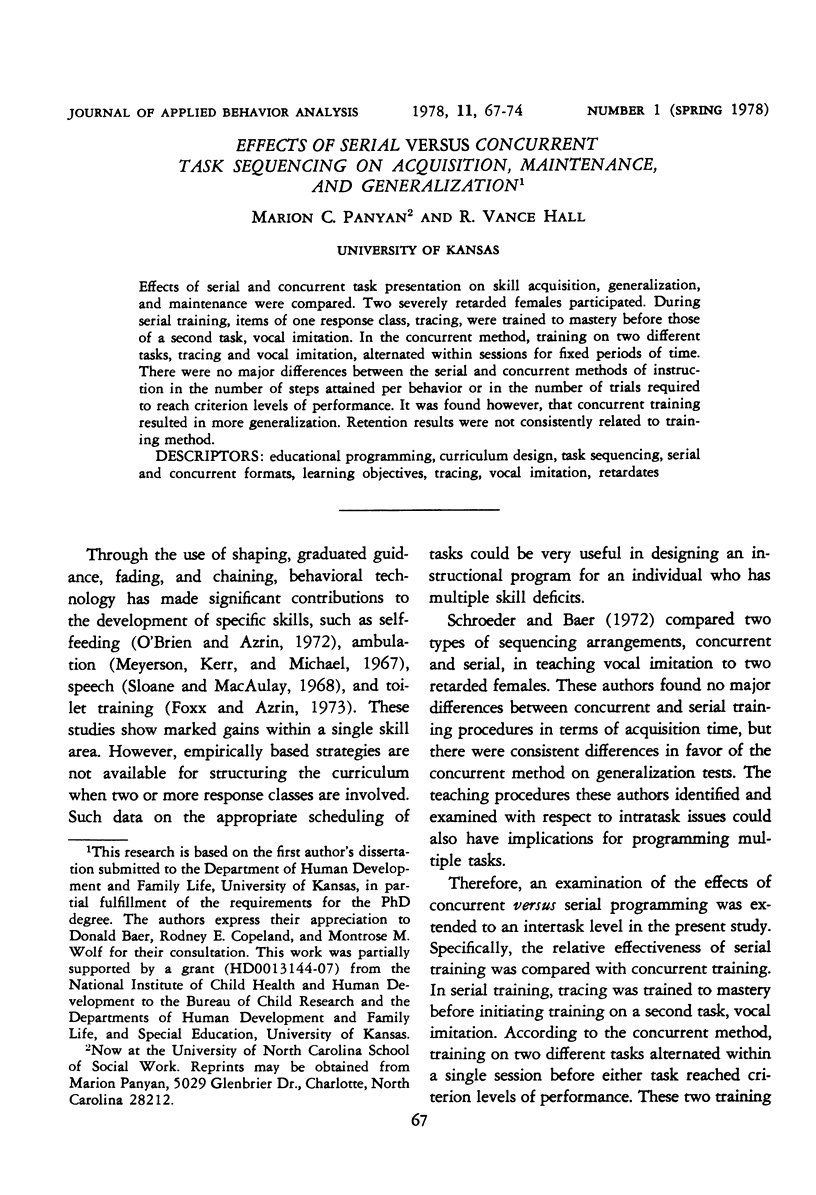

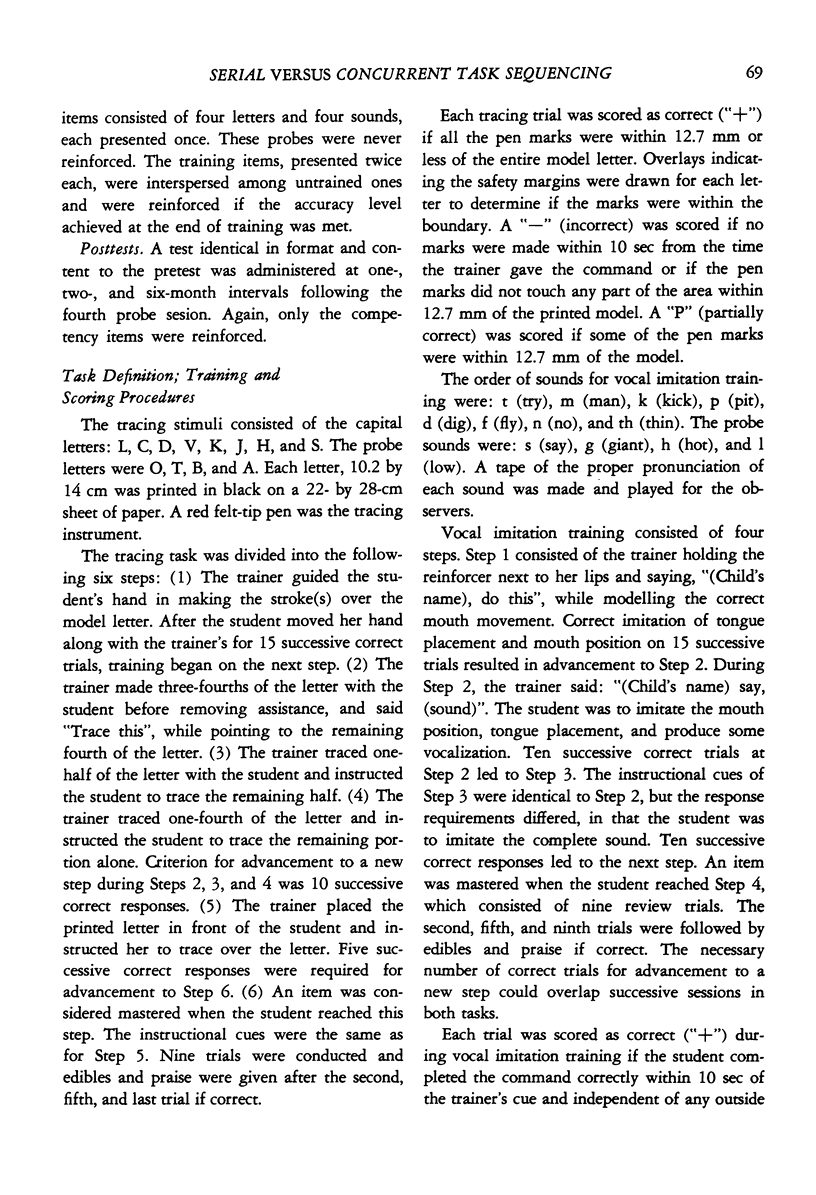
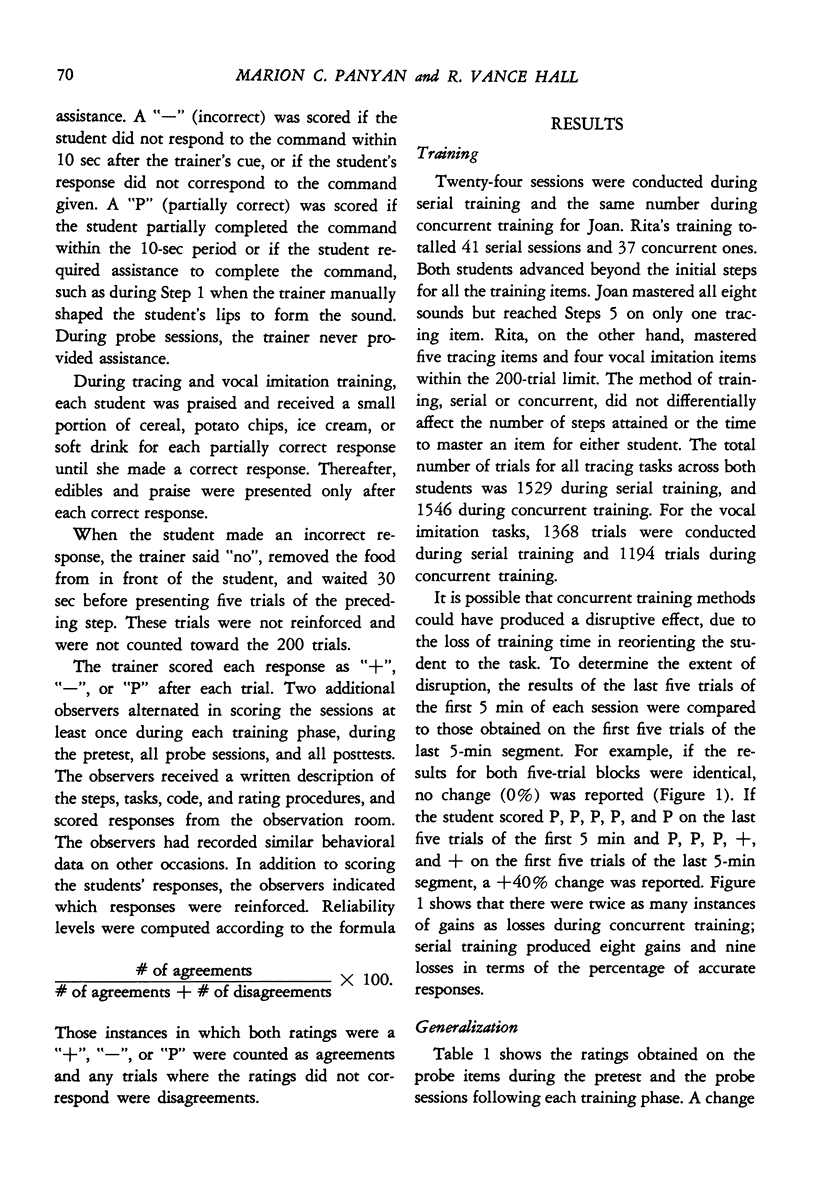
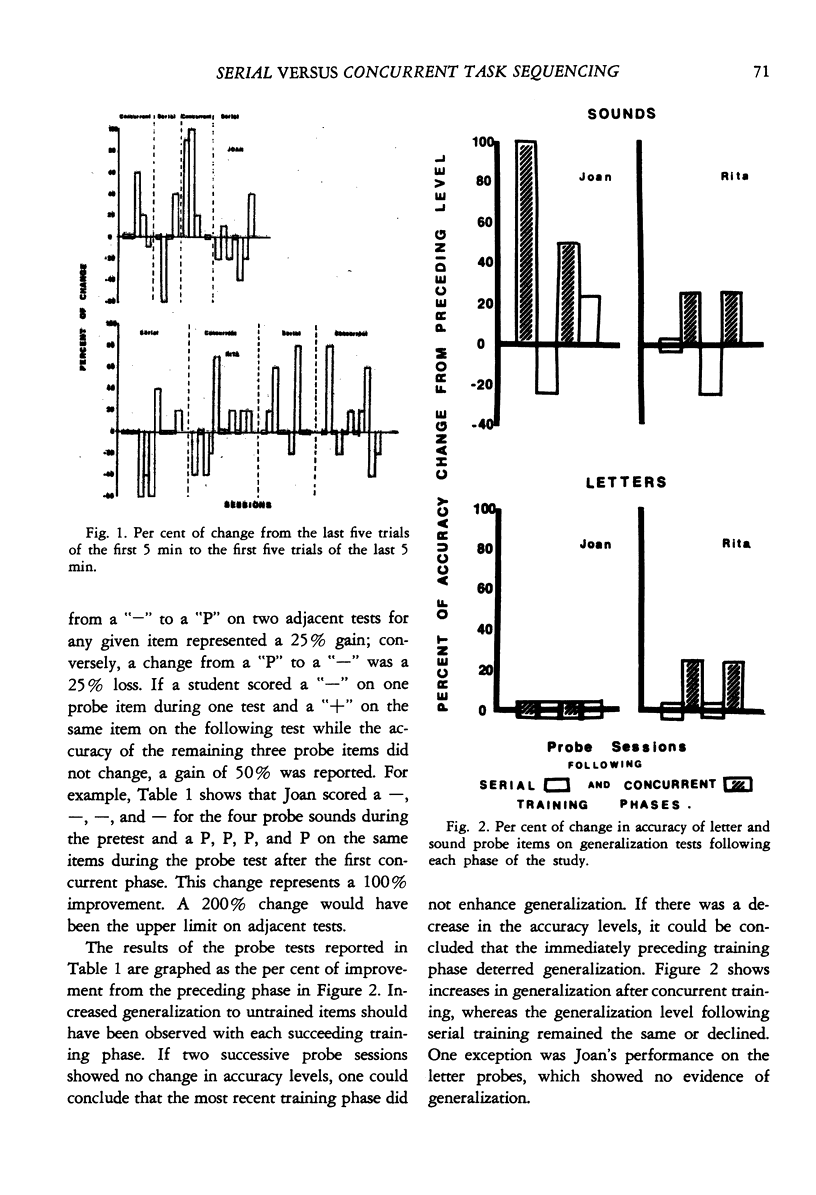
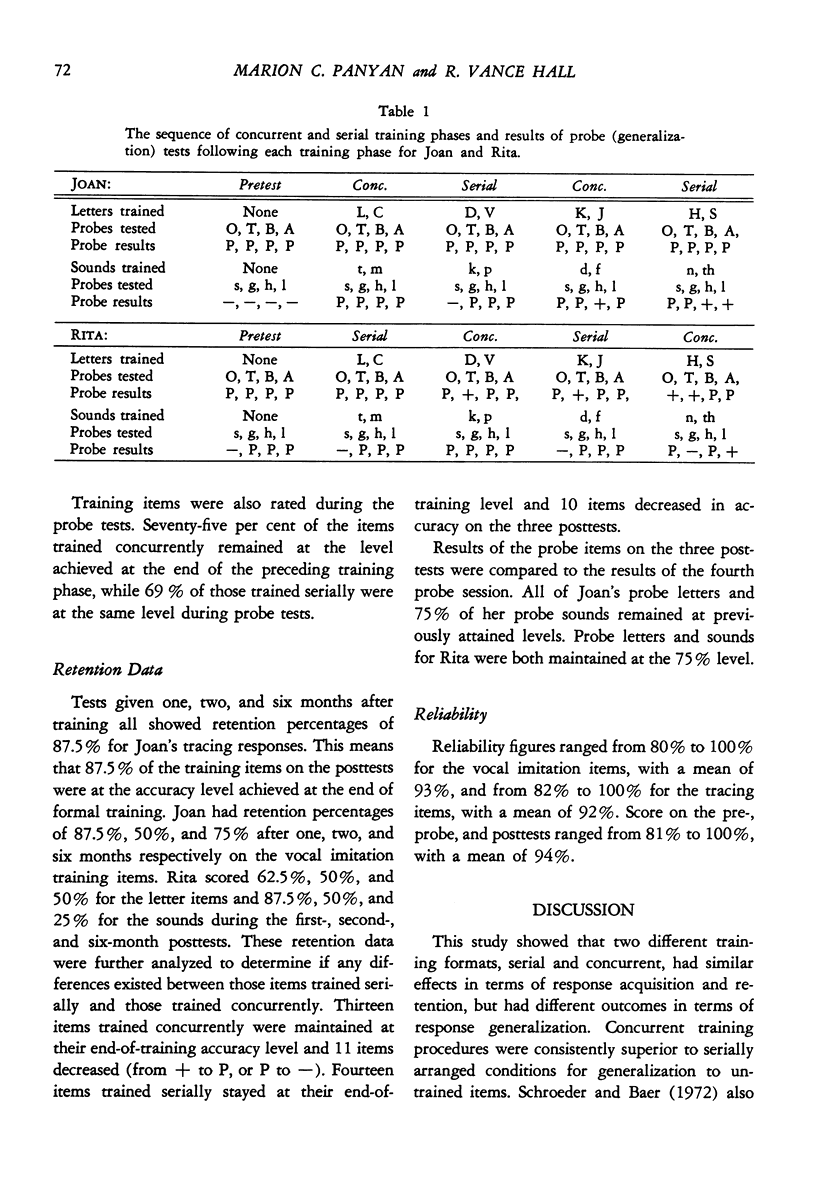
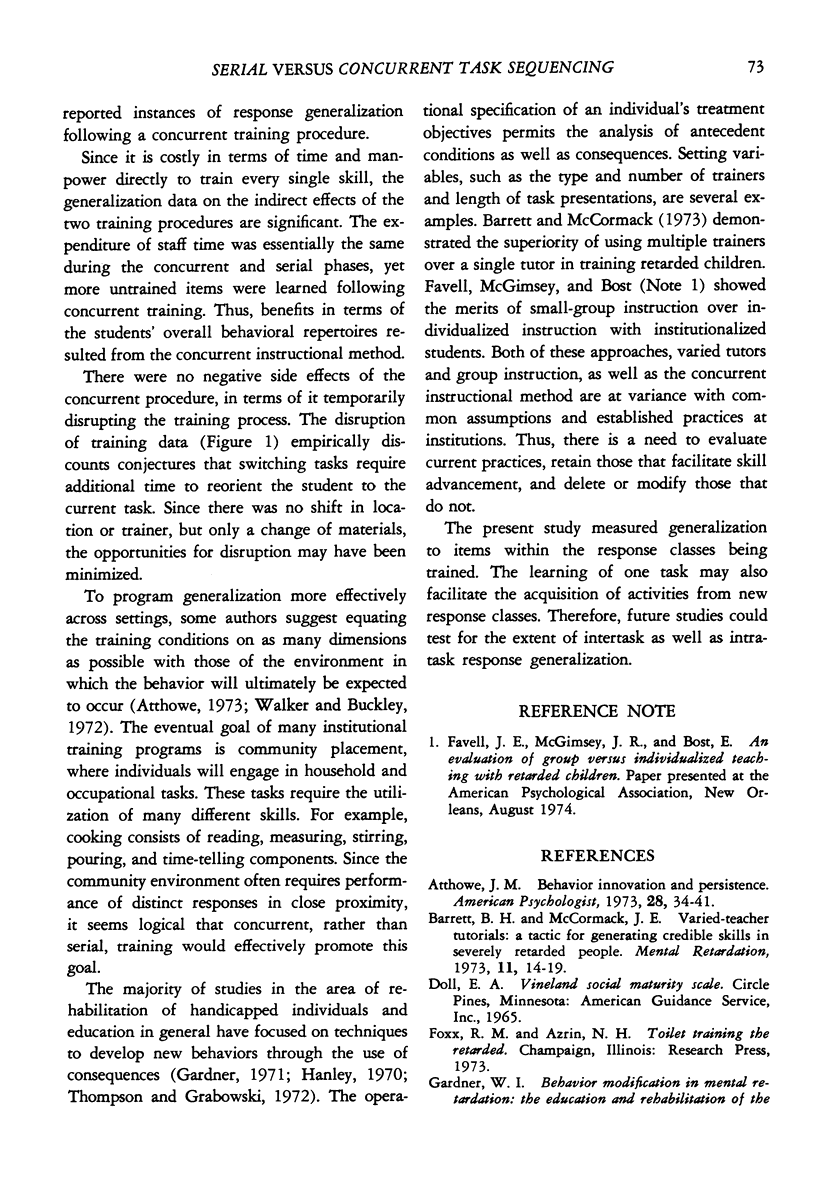
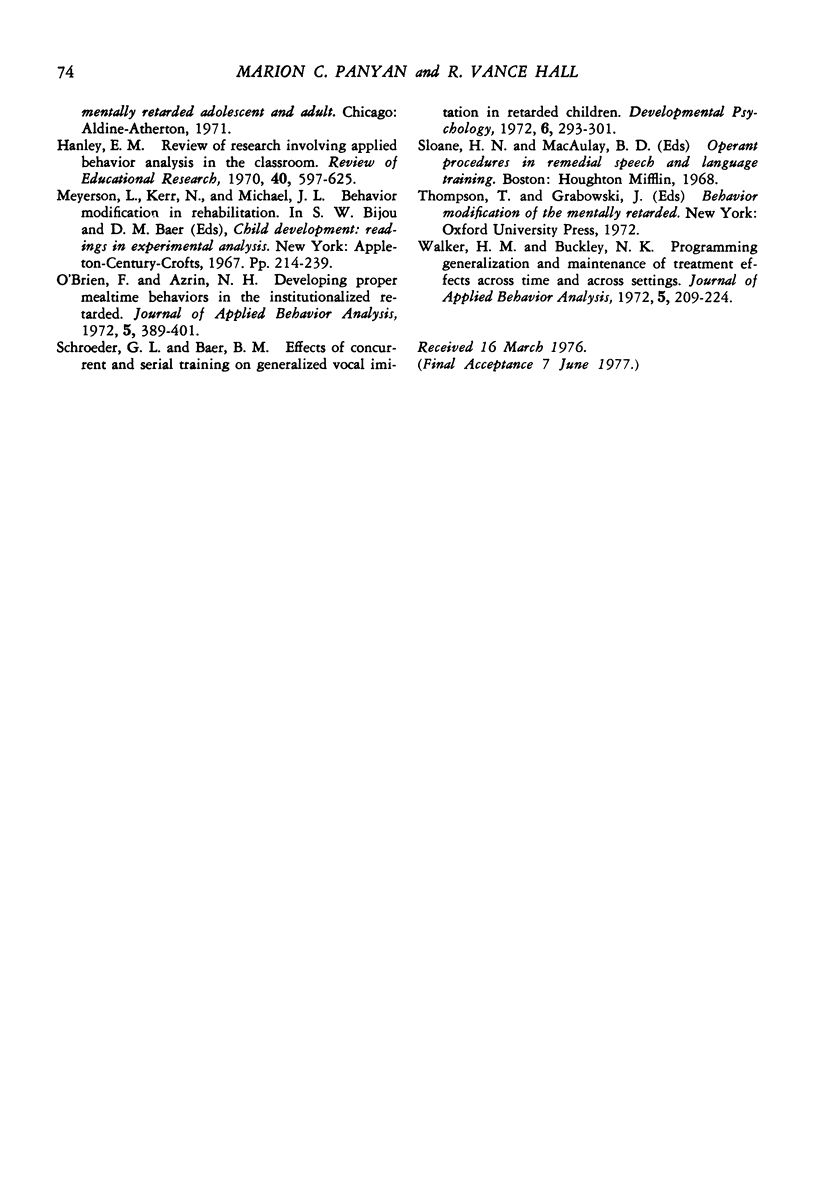
Selected References
These references are in PubMed. This may not be the complete list of references from this article.
- Atthowe J. M., Jr Behavior innovation and persistence. Am Psychol. 1973 Jan;28(1):34–41. doi: 10.1037/h0034168. [DOI] [PubMed] [Google Scholar]
- Barrett B. H., McCormack J. E., Jr Varied-teacher tutorials: a tactic for generating credible skills in severely retarded people. Ment Retard. 1973 Dec;11(6):14–19. [PubMed] [Google Scholar]
- O'brien F., Azrin N. H. Developing proper mealtime behaviors of the institutionalized retarded. J Appl Behav Anal. 1972 Winter;5(4):389–399. doi: 10.1901/jaba.1972.5-389. [DOI] [PMC free article] [PubMed] [Google Scholar]
- Walker H. M., Buckley N. K. Programming generalization and maintenance of treatment effects across time and across settings. J Appl Behav Anal. 1972 Fall;5(3):209–224. doi: 10.1901/jaba.1972.5-209. [DOI] [PMC free article] [PubMed] [Google Scholar]


